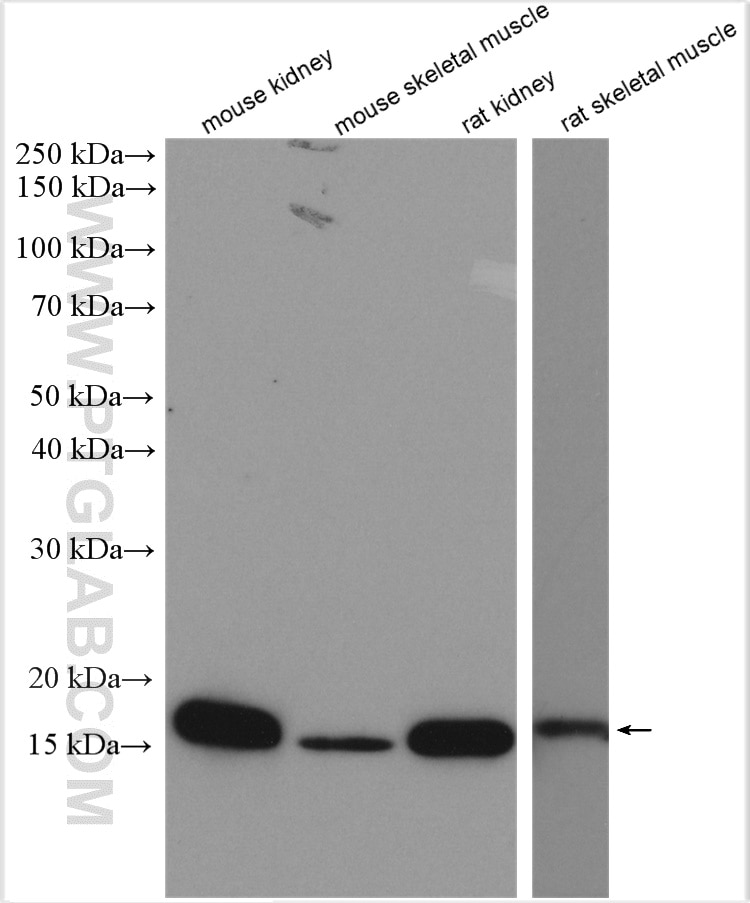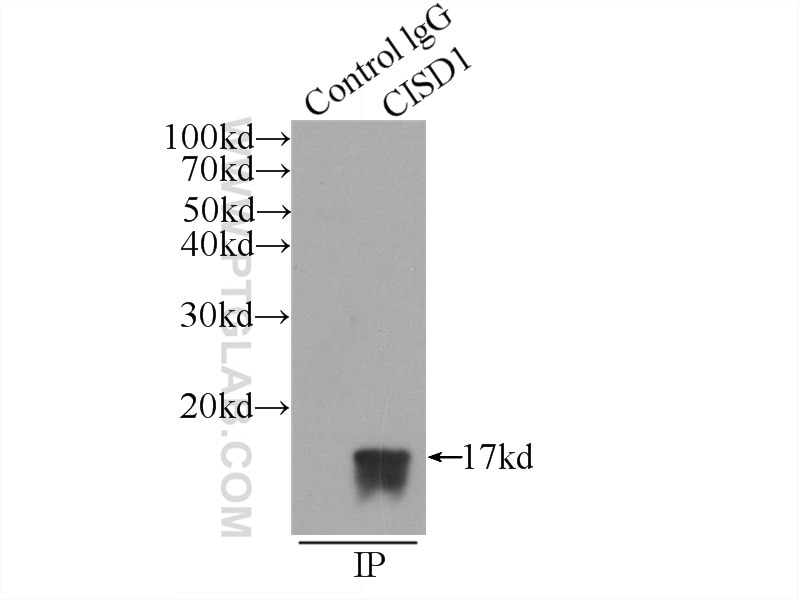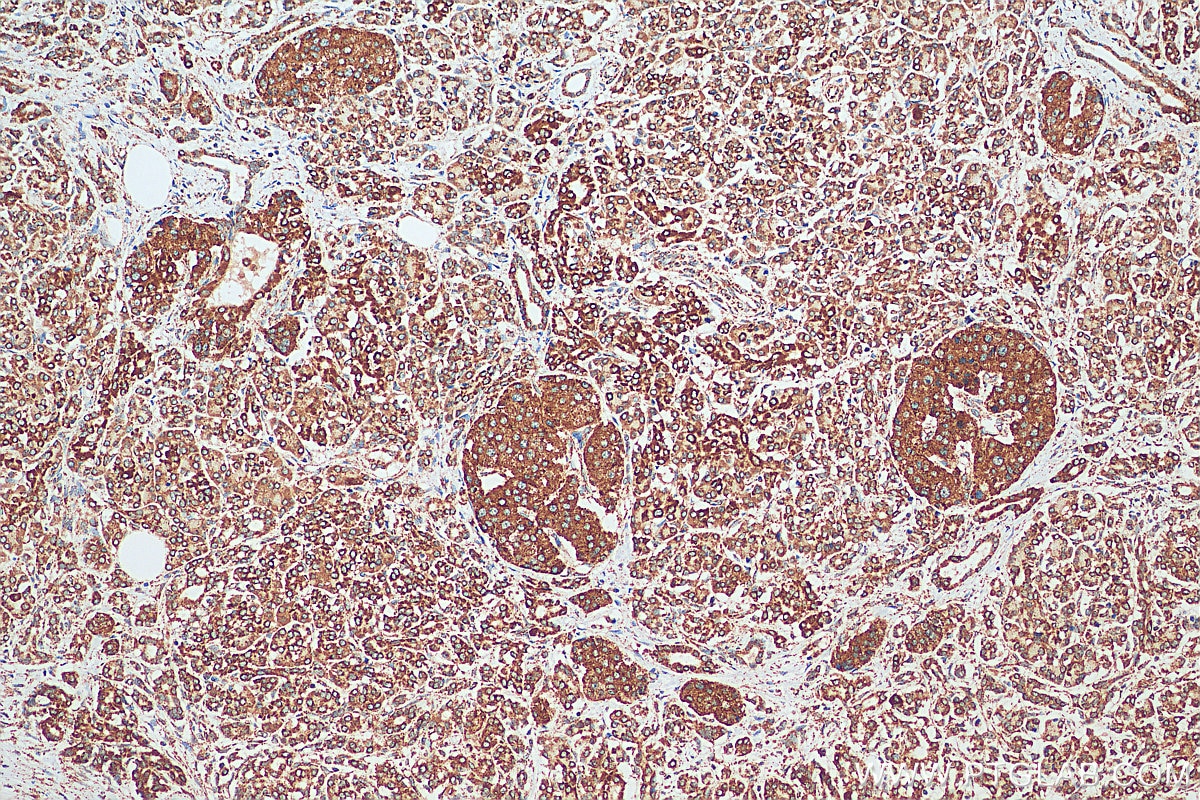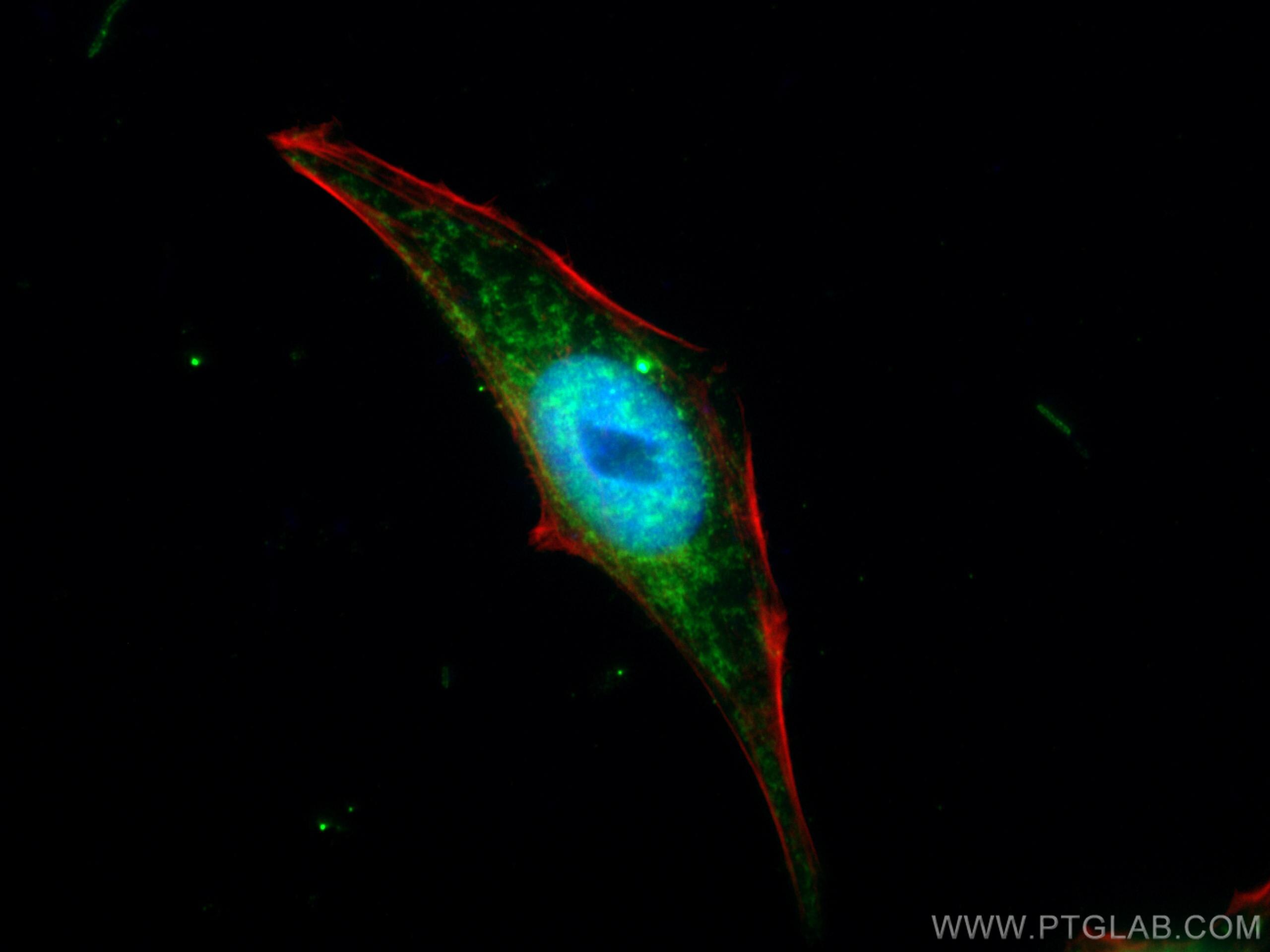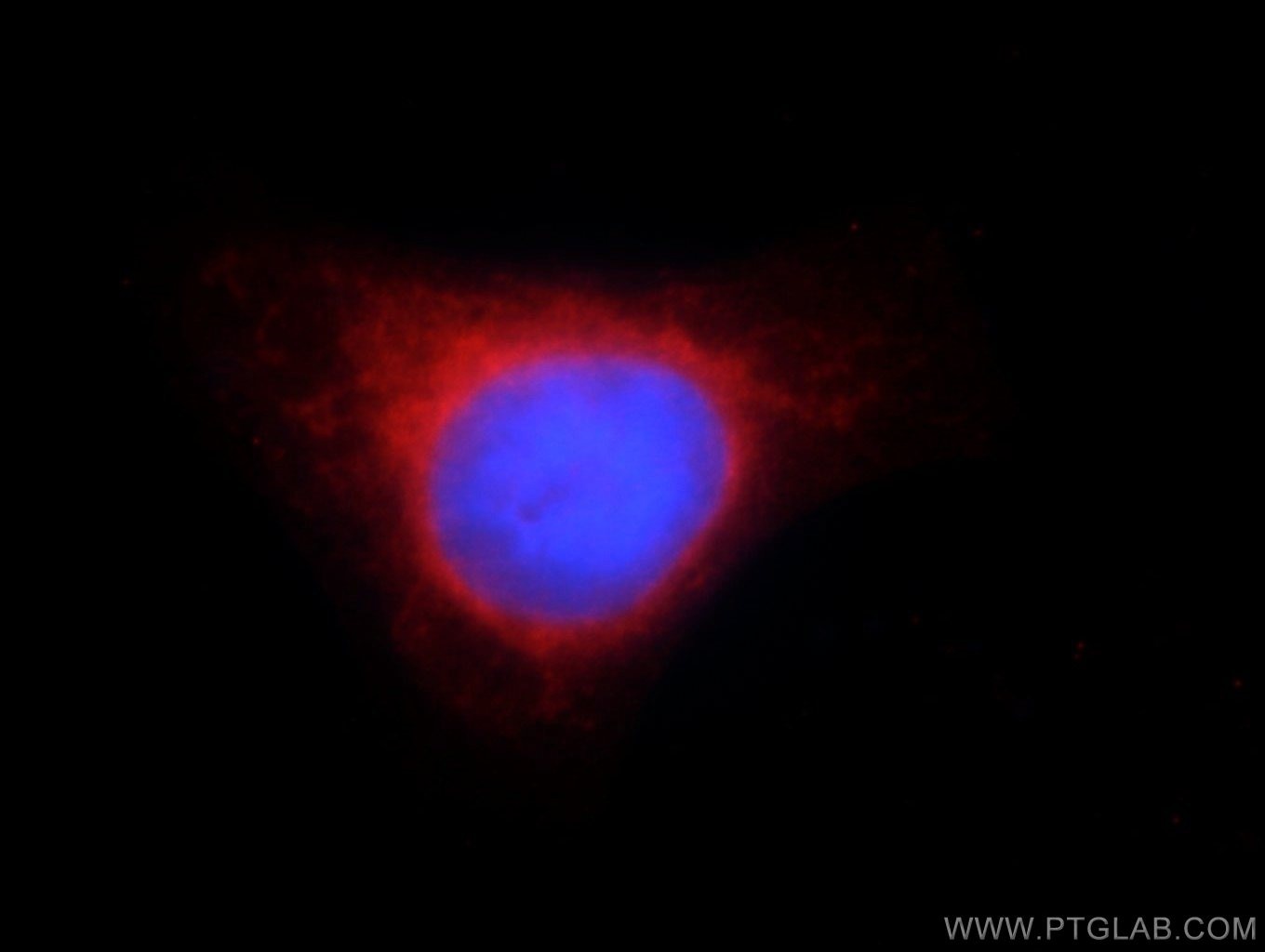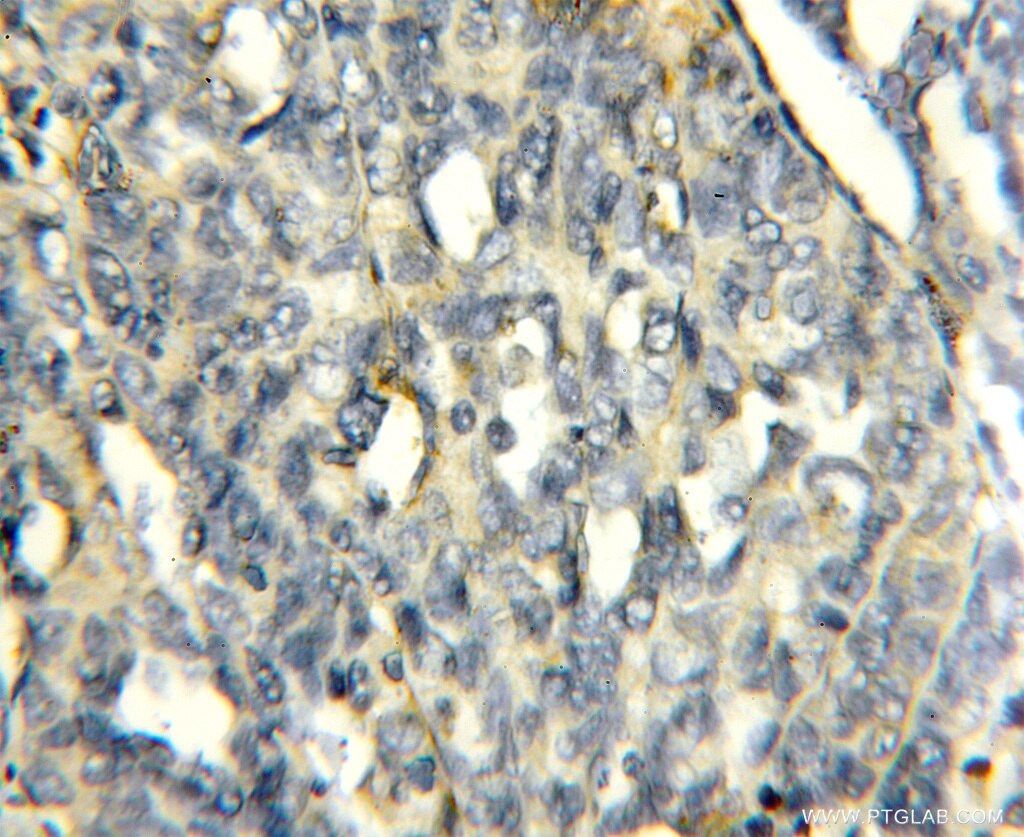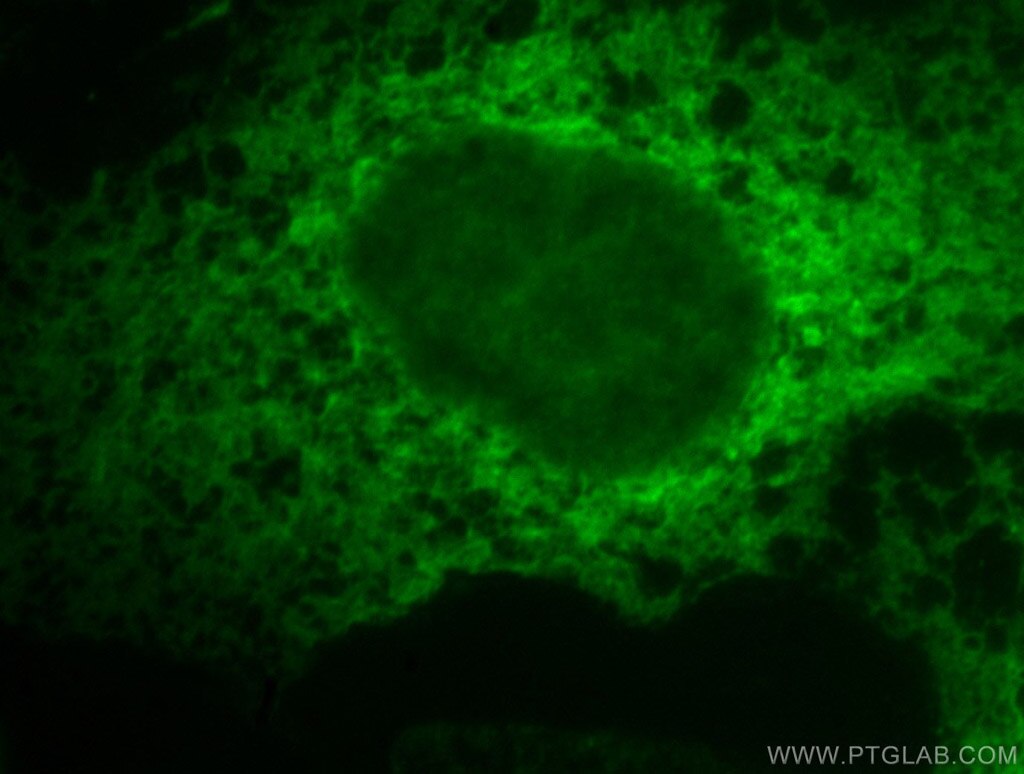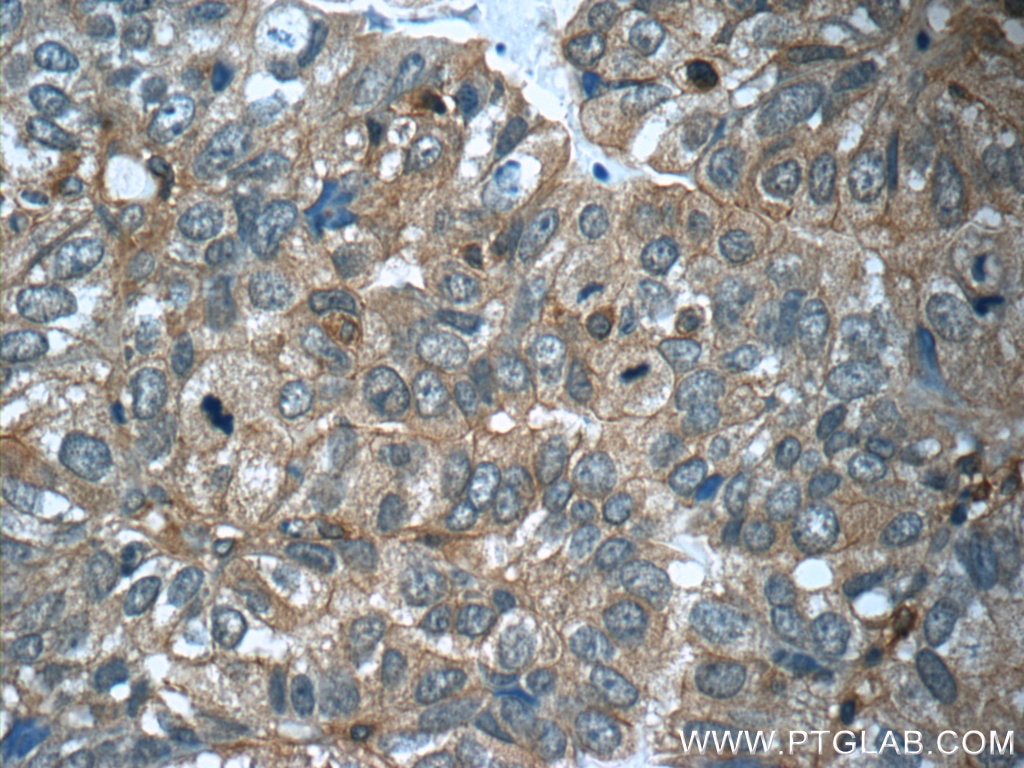- Phare
- Validé par KD/KO
Anticorps Polyclonal de lapin anti-CISD1
CISD1 Polyclonal Antibody for WB, IP, IF, IHC, ELISA
Hôte / Isotype
Lapin / IgG
Réactivité testée
Humain, rat, souris
Applications
WB, IHC, IF/ICC, IP, ELISA
Conjugaison
Non conjugué
N° de cat : 16006-1-AP
Synonymes
Galerie de données de validation
Applications testées
| Résultats positifs en WB | tissu rénal de souris, tissu de muscle squelettique de rat, tissu de muscle squelettique de souris, tissu rénal de rat |
| Résultats positifs en IP | cellules HepG2 |
| Résultats positifs en IHC | tissu de cancer du pancréas humain, il est suggéré de démasquer l'antigène avec un tampon de TE buffer pH 9.0; (*) À défaut, 'le démasquage de l'antigène peut être 'effectué avec un tampon citrate pH 6,0. |
| Résultats positifs en IF/ICC | cellules HepG2, |
Dilution recommandée
| Application | Dilution |
|---|---|
| Western Blot (WB) | WB : 1:5000-1:50000 |
| Immunoprécipitation (IP) | IP : 0.5-4.0 ug for 1.0-3.0 mg of total protein lysate |
| Immunohistochimie (IHC) | IHC : 1:50-1:500 |
| Immunofluorescence (IF)/ICC | IF/ICC : 1:50-1:500 |
| It is recommended that this reagent should be titrated in each testing system to obtain optimal results. | |
| Sample-dependent, check data in validation data gallery | |
Applications publiées
| KD/KO | See 4 publications below |
| WB | See 34 publications below |
| IHC | See 2 publications below |
| IF | See 4 publications below |
| IP | See 2 publications below |
Informations sur le produit
16006-1-AP cible CISD1 dans les applications de WB, IHC, IF/ICC, IP, ELISA et montre une réactivité avec des échantillons Humain, rat, souris
| Réactivité | Humain, rat, souris |
| Réactivité citée | rat, Humain, souris |
| Hôte / Isotype | Lapin / IgG |
| Clonalité | Polyclonal |
| Type | Anticorps |
| Immunogène | CISD1 Protéine recombinante Ag8680 |
| Nom complet | CDGSH iron sulfur domain 1 |
| Masse moléculaire calculée | 108 aa, 12 kDa |
| Poids moléculaire observé | 14-17 kDa |
| Numéro d’acquisition GenBank | BC007043 |
| Symbole du gène | CISD1 |
| Identification du gène (NCBI) | 55847 |
| Conjugaison | Non conjugué |
| Forme | Liquide |
| Méthode de purification | Purification par affinité contre l'antigène |
| Tampon de stockage | PBS avec azoture de sodium à 0,02 % et glycérol à 50 % pH 7,3 |
| Conditions de stockage | Stocker à -20°C. Stable pendant un an après l'expédition. L'aliquotage n'est pas nécessaire pour le stockage à -20oC Les 20ul contiennent 0,1% de BSA. |
Informations générales
MitoNEET, also named CISD1, belongs to a previously uncharacterized ancient family of proteins for which the hallmark is the presence of a unique 39 amino acid CDGSH domain. It is a single-pass type III membrane protein, located in mitochondrion outer membrane and may play a role in regulating maximal capacity for electron transport and oxidative phosphorylation. MitoNEET is a recently identified drug target for a commonly prescribed diabetes drug, Pioglitazone. This antibody recognizing MitoNEET (calculated 12 kDa) as a 17 kDa protein may be due to its posttranslational modification or metal binding activity.
Protocole
| Product Specific Protocols | |
|---|---|
| WB protocol for CISD1 antibody 16006-1-AP | Download protocol |
| IHC protocol for CISD1 antibody 16006-1-AP | Download protocol |
| IF protocol for CISD1 antibody 16006-1-AP | Download protocol |
| IP protocol for CISD1 antibody 16006-1-AP | Download protocol |
| FC protocol for CISD1 antibody 16006-1-AP | Download protocol |
| Standard Protocols | |
|---|---|
| Click here to view our Standard Protocols |
Publications
| Species | Application | Title |
|---|---|---|
Cell Metab Basal Mitophagy Occurs Independently of PINK1 in Mouse Tissues of High Metabolic Demand. | ||
Mol Cell Quantitative proteomics reveal a feedforward mechanism for mitochondrial PARKIN translocation and ubiquitin chain synthesis. | ||
Mol Cell Dynamics of PARKIN-Dependent Mitochondrial Ubiquitylation in Induced Neurons and Model Systems Revealed by Digital Snapshot Proteomics. | ||
Mol Cell Global Landscape and Dynamics of Parkin and USP30-Dependent Ubiquitylomes in iNeurons during Mitophagic Signaling. | ||
Sci Adv AMPK/ULK1-mediated phosphorylation of Parkin ACT domain mediates an early step in mitophagy. |
